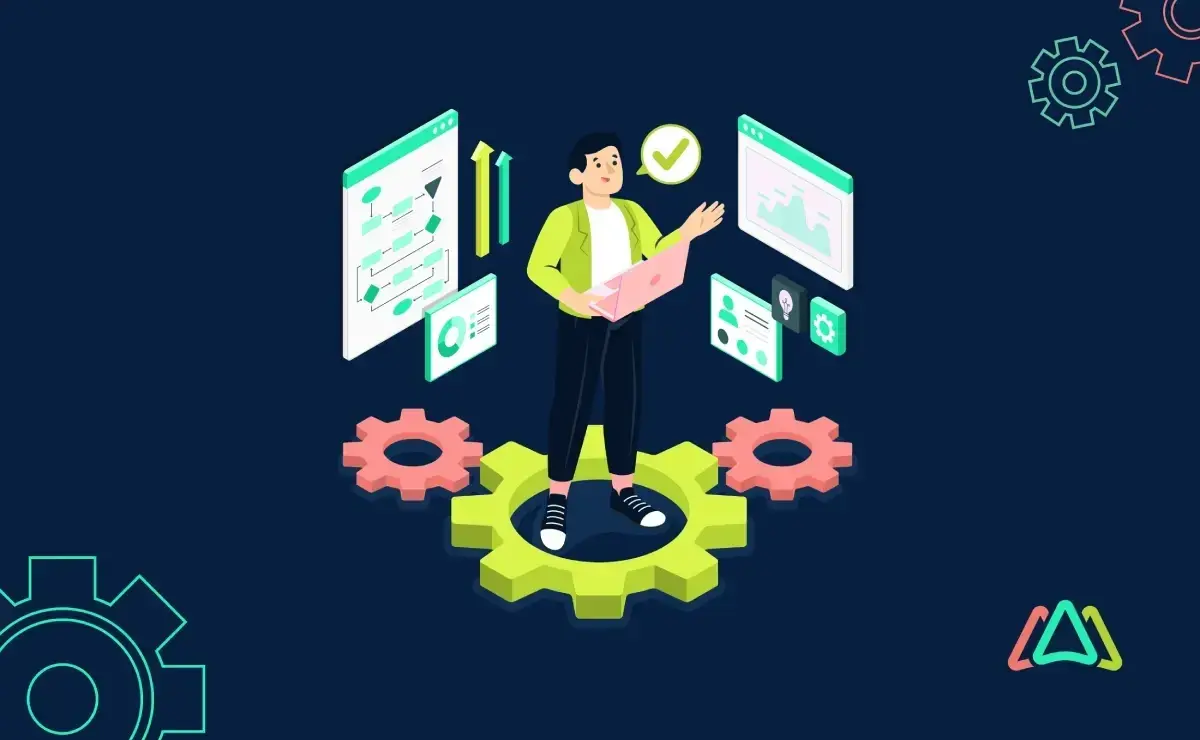
5 Tips for a Smooth and Successful CMMS Implementation
Introduction
The exhaustive search for your organization’s Computerized Maintenance Management System (CMMS) is finally over. Through due diligence, you found a CMMS software that meets your organization’s needs by offering features, pricing, and support that will satisfy your goals now and in the future. With all this now in the rearview mirror, it’s time to put your CMMS software in action and do the intended job. Here’s where the rubber meets the road: the implementation process.
Your CMMS vendor undoubtedly explained that CMMS implementation is a critical process with enormous implications for how the CMMS will oversee a company’s maintenance operations. Errors at this stage could likely result in delays, cost overruns, data inaccuracies, and low user engagement, which can undermine the CMMS's intended benefits and even fail to satisfy a company’s maintenance needs and goals. To be successful, carefully planned steps with great attention to detail need to be followed to transition existing maintenance processes to the new system.
The implementation process encompasses data migration, system configuration, user training, and change management tasks. Throughout it, organizations must also prioritize communication, collaboration, and ongoing support to address any challenges or issues that may arise. The bottom line is that the implementation process should be timely and careful. Here, we’ll offer five tips on how to get through it smoothly.
Tip #1: Develop a Comprehensive CMMS Implementation Plan
A comprehensive implementation plan is crucial for ensuring a smooth and successful integration of a CMMS into an organization's operations. To begin, it involves identifying key milestones and timelines that outline the various stages of the implementation process. These milestones represent tangible checkpoints to track progress and ensure the implementation stays on schedule. By breaking down the implementation into manageable phases and setting clear timelines for each milestone, managing resources, mitigating risks, and maintaining momentum throughout the project becomes more manageable. Creating realistic timelines helps manage stakeholders' expectations and ensures all involved are in sync with the implementation schedule.
Allocating resources effectively is essential for successfully executing the implementation plan. This includes financial resources, human resources, time, and technological infrastructure. To do so, assessing an organization’s existing capabilities and determining what additional resources may be required to support the implementation process is a valuable approach. This could involve assigning dedicated project teams, hiring external consultants or trainers, investing in hardware or software upgrades, and allocating sufficient time for training and testing. By adequately resourcing the implementation, disruptions to daily operations are minimized, potential challenges are addressed, and the chances of a possible successful outcome are maximized.
A comprehensive implementation plan should also include ways to monitor and control resources throughout the project lifecycle by establishing clear accountability for resource management, tracking expenditures, and adjusting resource allocations when needed. These steps allow organizations to adapt to evolving needs and optimize resource utilization to ensure the implementation stays on track and within budget. Developing a comprehensive implementation plan and allocating resources effectively helps organizations minimize risks, optimize outcomes, and achieve their goals for implementing a CMMS.
Tip #2: Invest in CMMS Training and Change Management
As the technical aspects of the CMMS implementation are ongoing, it’s essential to invest in training and change management to ensure a successful CMMS implementation. Providing comprehensive training for all users is crucial to ensure they can use the CMMS effectively. This training should cover various aspects of the system, including navigation, data entry, reporting, and troubleshooting. It can also be tailored to different user groups based on their roles and responsibilities within the organization, ensuring that each user receives the necessary knowledge and skills to leverage the CMMS to its fullest potential. Ongoing training opportunities are an added consideration because they allow users to continually boost their proficiency and adapt to any updates or changes in the system over time.
Implementing change management strategies is vital in addressing resistance and fostering a culture of acceptance and adoption among employees. Resistance to change is a common challenge in any organizational transformation and can impact the success of a CMMS implementation if not addressed effectively. Change management strategies include communication plans, stakeholder engagement, and leadership support to create awareness of the benefits of the CMMS and address any concerns or apprehensions that employees may have. Providing support resources, such as user guides, FAQs, and help desks, contributes to users feeling supported throughout the transition and are more likely to embrace the change positively. These approaches help organizations overcome resistance, accelerate user adoption, and maximize the return on their CMMS investment.
Tip #3: Ensure CMMS Data Accuracy for Migration
Ensuring data accuracy and successful migration are pivotal aspects of CMMS implementation. Cleansing and organizing existing data is the first step in ensuring accuracy and relevance within the new CMMS environment. This process involves identifying and rectifying any inconsistencies, duplicates, or errors in the data and standardizing data formats and classifications to mesh with CMMS requirements. Completed before migration, organizations can prevent the propagation of inaccuracies or inefficiencies in the new system, ensuring a solid foundation for effective maintenance management processes.
A robust data migration strategy is critical to transitioning seamlessly from the old system to the new CMMS. It should outline the steps, tools, and resources required to migrate data efficiently while minimizing disruptions to operations. Determining the scope of data to be migrated, mapping data fields between the old and new systems, and establishing procedures for validating data integrity post-migration are critical considerations in the data migration process. Doing so helps organizations mitigate risks such as data loss, corruption, or inconsistencies and ensures that vital information is transferred accurately and securely. A final step in data migration involves thorough testing and validating migrated data. This helps proactively identify and address any issues and ensures a smooth and successful transition to the new CMMS environment.
Tip #4: Monitor Progress and Adjust Accordingly
Monitoring the progress of milestones on an ongoing basis is essential for ensuring the CMMS implementation stays on track and meets its objectives. By doing so, organizations can identify deviations from the planned timeline or scope and promptly take corrective actions. Regular progress tracking informs stakeholders about the implementation status and clarifies the project's overall performance.
Adapting and making changes as needed are crucial for navigating unforeseen challenges and uncertainties during the CMMS implementation process. To do so, stakeholders must maintain flexibility and agility in the project approach and be open to adjusting plans, timelines, or resources as needed. By being responsive to changing conditions and feedback from stakeholders, organizations can address issues quickly and implement timely course corrections to keep the implementation on track. Flexibility and agility provide valuable lessons learned from the implementation process to refine strategies, optimize processes, and drive ongoing success with the CMMS. The ability to adapt and make changes as needed ensures that the CMMS implementation remains aligned with organizational goals and delivers maximum value to the business.
Tip #5: Establish Ongoing CMMS Support and Optimization Efforts
A plan for ongoing support and optimization is essential in maintaining the long-term pertinence and efficiency of the CMMS. Beyond addressing immediate issues following the implementation process, this plan fosters a culture of continuous improvement within the organization. CMMSs are not intended to be static. Instead, regular review and optimization of CMMS processes ensure they mesh with evolving business needs, industry best practices, and regulatory requirements. Staying informed of software updates, new features, and emerging technologies in CMMS helps organizations capitalize on maintenance management advancements and enhance market productivity and competitiveness. By embracing a proactive approach to support and optimization, organizations can maximize the return on their CMMS investment and sustainably direct improvements in maintenance operations over time.
Conclusion
Successful CMMS implementation requires careful planning, proactive management, and ongoing support to realize its full potential. By following essential tips such as establishing and developing a comprehensive implementation plan, investing in training and change management, ensuring data accuracy and migration, and monitoring progress while adapting as needed, organizations and establishing ongoing support, organizations can overcome challenges and achieve their maintenance management goals effectively. Developing a plan for continuing support and optimization ensures the long-term success and effectiveness of the CMMS by addressing user needs, optimizing processes, and staying abreast of technological advancements. Ultimately, by prioritizing these strategies and embracing a culture of continuous improvement, organizations can maximize the value of their CMMS investment, achieve operational success, and stay competitive in an ever-evolving business climate.
TABLE OF CONTENTS
Keep Reading
Every maintenance professional faces it sooner or later — that critical time when an aging ...
18 Nov 2025
The term 'best' is often used loosely, without a clear understanding of its context or ...
14 Nov 2025
In the not too distant past, maintenance strategies have been defined by reaction—fixing ...
13 Nov 2025
Tax season is the time of year that often sends a ripple of anxiety through many of us. The ...
11 Nov 2025
Selecting a Computerized Maintenance Management System (CMMS) can, at first glance, be an ...
4 Nov 2025
In healthcare facilities, equipment uptime involves more than achieving operational ...
31 Oct 2025
Companies are subject to economic ups and downs, also known as economic volatility. Today, ...
30 Oct 2025
Maintenance challenges are a constant struggle, with unplanned downtime costing manufacturers ...
27 Oct 2025
Last winter, a maintenance technician at a U.S. paper mill ignored a predictive alert that ...
10 Oct 2025
Many organizations proudly say they “have a CMMS,” but ownership alone doesn’t equal ...
9 Oct 2025
Every maintenance team is under pressure to do more with less. Unplanned downtime is often ...
7 Oct 2025
The implementation of simple, yet powerfully effective, checklists has repeatedly ...
3 Oct 2025
In manufacturing, every second counts. When production stops, whether due to scheduled ...
2 Oct 2025
The increasing cost of maintenance, lack of accountability, and siloed systems leave many ...
30 Sep 2025
Preventive maintenance is one of those things maintenance teams know they need to do, but it ...
26 Sep 2025
Public services are essential to daily life. The provision of safe roads, functional transit, ...
25 Sep 2025
For most manufacturing facilities, a major focus of their maintenance teams revolves around ...
24 Sep 2025
Have you ever tried explaining to the CEO why the production line has been down for hours ...
18 Sep 2025
Over the past few decades, the hotel industry has undergone a dramatic transformation. ...
16 Sep 2025
Profitability is at the top of the list for manufacturing organizations when conversations ...
12 Sep 2025





